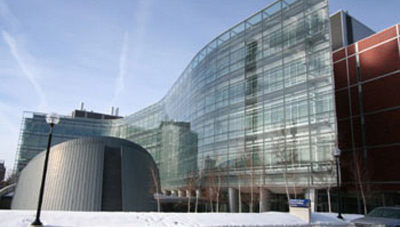
The next NA Meeting is to be held on 13-15 May 2016 at the University of Michigan in Ann Arbor, Michigan.
ChAc research is at an important juncture. Interesting recent results on VPS13A structure and function indicate the prospect of considerable progress in understanding ChAc pathogenesis. Members of this gene family are also implicated in other neurodegenerative diseases. Considering the growth in understanding intracellular transport processes, and the increasingly strong links between these processes and neurodegenerative disease, progress in understanding ChAc pathogenesis and the function of VPS13A may cast light on both the pathogenesis of other neurodegenerative disorders and the cell biology of intracellular transport.
Next May's interdisciplinary meeting will set the stage for future research on ChAc. Key aims include:
1: To accelerate progress in understanding ChAc pathogenesis by promoting interdisciplinary collaboration between basic scientists studying intracellular transport, and translational and clinical researchers studying ChAc.
2: To identify critical research goals for the field.
3: To recruit new investigators into ChAc-related research.
To that end, attendees of the meeting-workshop will include a diverse group of participants, including clinical, translational, and basic science researchers.
Invited participants are primarily accomplished investigators, including those working on ChAc directly, on related neurodegenerative diseases, or the basic biology of intracellular transport. The meeting format will consist of a day of formal talks on ChAc, related disorders, and intracellular transport mechanisms followed by a workshop aimed at identifying critical issues for the field.
To expand the pool of ChAc researchers, accomplished basic and translational researchers from outside the field have been invited and will subsidize attendance of a cadre of talented junior investigators, who will be full participants in the meeting.
The small size, workshop format, and interdisciplinary nature of the meeting will maximize participant interactions, and the formal sessions and workshop will be enhanced with social events and a poster session.
The meeting's location in Ann Arbor, Michigan, will also have the advantage of excellent facilities offered by the University of Michigan and capitalize on the presence of strong research communities interested in neurodegeneration and intracellular transport. The meeting venue is completely accessible for individuals with disabilties.
This meeting is being supported financially by the University of Michigan School of Medicine and the Rackham School of Graduate Studies, the Departments of Neurology and Biological Chemistry, philanthropy, and a grant from the Advocacy for Neuroacanthocytosis Patients.
PATIENTS
Also invited to this meeting are patients and families. The purpose would be two-fold:
1) To meet others affected by NA, including their family and carers, for support and information
2) To discuss the future of the Advocacy for Neuroacanthocytosis Patients. We are a small, web-based charity registered in the UK and the US, and are looking for volunteers who might be interested in taking over some of the organizational aspects of the group. This could include managing the website, being involved in finances, e.g. administration of grants, requesting proposals for grants, managing marketing and PR, translation services, being a “Patient Advocate” and promoting fundraising events If you have some energy and expertise to contribute to advance awareness, education, and support for people affected by NA, we hope that you would be interested in attending such a meeting. If you cannot attend, but are still interested in helping, we would love to hear from you – this could be done from anywhere in the world.
A separate programme will be organised for this group.
Look out for a report on the Michigan meeting in future issues of NA News.